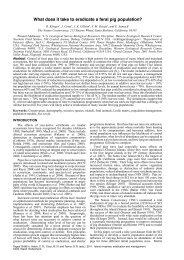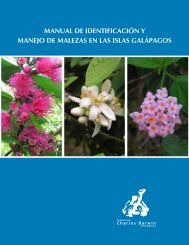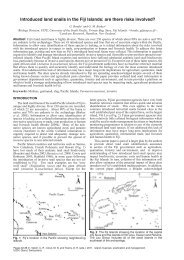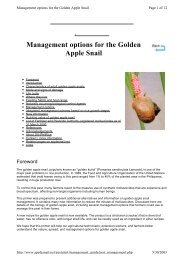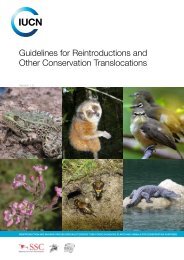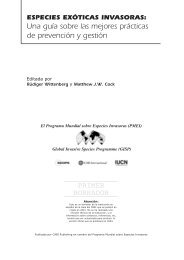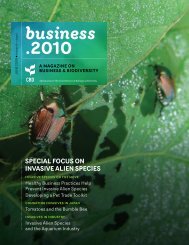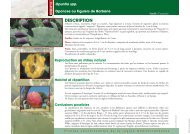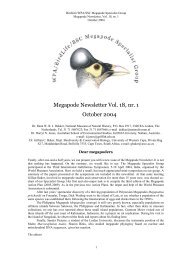Stampa Layout 1 - IUCN Invasive Species Specialist Group
Stampa Layout 1 - IUCN Invasive Species Specialist Group
Stampa Layout 1 - IUCN Invasive Species Specialist Group
Create successful ePaper yourself
Turn your PDF publications into a flip-book with our unique Google optimized e-Paper software.
AlterIAS: a LIFE+ project to curb the introduction of invasive<br />
ornamental plants in Belgium<br />
Mathieu Halford, Etienne Branquart, Sonia Vanderhoeven, Leen Heemers, Catherine Mathys,<br />
Claire Collin, Sabine Wallens and Grégory Mahy<br />
Ornamental horticulture is recognized to be the<br />
main pathway for plant invasions worldwide. To decrease<br />
the influence of the horticulture sector on the<br />
issue, a LIFE+ information and communication<br />
project entitled “AlterIAS” (ALTERnative to <strong>Invasive</strong><br />
Alien <strong>Species</strong>) was launched in 2010 in Belgium.<br />
It aims at raising awareness about the environmental<br />
risks of invasive ornamental plants<br />
amongst the whole horticulture supply chain. This<br />
is done through collaboration between scientists, environmental<br />
agencies and professionals in the horticultural<br />
sector, considering the socio-economic importance<br />
of species to elaborate a code of conduct<br />
and conduct awareness campaigns.<br />
Introduction<br />
The horticultural industry in Europe and elsewhere in<br />
the world has brought great social and economic benefit<br />
and has made a vast array of plant diversity available<br />
to the public. In Europe more than 70,000 plant<br />
species and cultivars are grown in green areas and new<br />
introductions are constantly being sought (Harrington<br />
et al. 2003; Dehnen-Schmutz et al. 2008; Heywood<br />
and Brunel 2009; Drew et al. 2010). Ornamental horticulture<br />
is widely acknowledged as the main pathway<br />
of plant invasions worldwide (Reichard et al. 2001;<br />
Bell et al. 2003; Burt et al. 2007; Dehnen-Schmutz<br />
et al. 2007). They are facilitated through repeated local<br />
introductions and cultivation of non-native plant<br />
species that increase the likelihood of escape and establishment<br />
in natural habitats (Mack 2000, Kowarik<br />
2003, Dehnen-Schmutz et al. 2008). Like in many<br />
countries worldwide, Belgian land managers face an<br />
increasing occurrence of invasive ornamental plants<br />
(IOP) showing detrimental effects on the environment.<br />
Despite the growing number of studies that highlight<br />
the environmental, economic and public health hazards<br />
of plant invasions, they are less well known<br />
outside the scientific audience. Recent surveys of<br />
horticulture professionals in Belgium showed that<br />
most have a limited understanding of the range of<br />
threats posed by IOP, do not know which plant<br />
species are invasive in Belgium and consider<br />
themselves poorly informed (Halford et al. 2011;<br />
Vanderhoeven et al. 2011). Due to the lack of information,<br />
ornamental plant users or producers still<br />
produce, distribute and plant IOP. It is therefore necessary<br />
to inform and communicate with them to<br />
change attitudes, reduce the frequency of secondary<br />
releases and slow down plant invasions.<br />
Fig. 1. Cotoneaster species are often sold in nurseries and used for ornamental purposes in Western Europe. They produce<br />
seeds that are bird-dispersed and are increasingly observed in rocky habitats and dry grasslands, where they may<br />
outcompete rare and threatened plant species (Piqueray et al. 2008; Dickoré & Kasperek 2010). Photos: Etienne Branquart<br />
(left) and Mathieu Halford (right)<br />
36 31/2011



